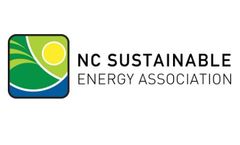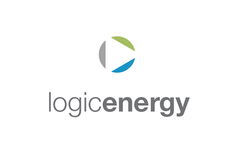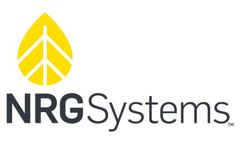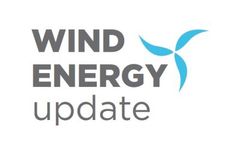Air Flow Monitoring For Wind Farm Articles & Analysis: Older
21 articles found
Wind farms deliver power only when the wind is blowing, and maximum generation only occasionally coincides with peak demand. Yet people need power all the time. Conventional batteries can help somewhat, but they’re expensive and only last a few hours. When the wind subsides, the system produces nothing. What can be done to enable wind farms to operate every hour of the ...
The maintenance of wind turbines, and whole wind farms, is a challenge. Normally wind turbines are designed to operate for 20 years. During these 20 years they are subjected to all kinds of weather conditions and heavy loads, but thanks to modern acquisition technology and advanced numerical models, such conditions can be addressed and even turned into increased annual energy production. To ...
Effective asset management has become a buzz word in wind. We talk about it a lot. We peer at it from various lenses. And we pick at it from dawn to dusk. We get it. As renewable energy developers, managers, and consultants, we want answers: what really makes for effective wind asset management services? Today, as we round up a decade of actively campaigning for renewable energy, onshore wind ...
ByPowerhub
The environmental and economic benefits of clean energy have been well documented. However, not everyone experiences these benefits equally. As discussed in our July blog post, racial discrepancies have an impact on who is more likely to receive the benefits of clean energy, but geographic location also plays a role in determining who benefits. The five most populated counties in North Carolina ...
Global onshore wind speeds are rising, new study finds Global onshore wind speeds have risen since 2010, after decades of decline, boosting potential wind energy by around 17% between 2010 and 2017, according to a new academic study published in Nature. Rising wind speeds have increased U.S. wind turbine capacity factors by around 2.5% since 2010, representing half the gains in capacity ...
Wind energy has the potential to provide up to 30% of Europe’s power by 2030 according to figures released today by WindEurope in its Outlook to 2020 and Scenarios for 2030 reports. According to WindEurope’s projections, Europe could be on course for an average installation rate of 12.6 GW per year in the years up to 2020. This would take Europe to a total of 204 GW by 2020. By this ...
As part of their commitment to improving the energy efficiency of all homes and buildings within their borough, Barnsley Council contacted Logic Energy to see if they could assist Dearne Carrfield Primary School in discovering their “green potential” before investing in a renewable energy system. With solar thermal systems, wind, solar PV and biomass systems all an option, the school ...
A Scottish council looking to make financial savings due to recent budget cuts needed to make decisions on whether renewable energy could improve the efficiency of their existing buildings. They wanted a time saving system that would allow them to get instant live data whenever they needed it and which would store the data in an easy to read format so that they didn’t have to spend time ...
We are happy to introduce a new goalpost mounting solution for installing redundant class 1 anemometers. This new boom, designed specifically for use with our 80m XHD TallTower, positions anemometer cups at exactly 80 m above ground level—2.5 m away from each other—and 1.99 m above the horizontal arm of the boom. This configuration complies with guidelines provided in Annex G of the ...
EXECUTIVE SUMMARY With 392 GW installed, wind energy can be the single largest source of power generation in the EU by 2030 ahead of coal and gas. Wind energy already plays a significant role in the European power sector. In 2014, the wind industry installed 11,791 MW in the EU - more than gas and coal combined. Today wind energy can meet 10.2% of Europe’s electricity demand with a ...
Greater plant owner demand for high speed computing and benchmarking data analysis platforms will cause rapid development of power upgrade packages and create a basis for further OEM innovation. High speed computing is making a major difference in wind data analysis. Today, major advances in time series and spatial analysis as well as the wake models used to estimate losses are possible because ...
The use of a genetic algorithm (GA) for optimal sizing of an off-grid hybrid renewable energy system (HRES) is reported. As a pre-feasibility analysis and to determine the appropriate HRES type to be studied, wind energy potential and solar irradiation are first examined for the considered region (Tehran, Iran). These are inputs of the algorithm, and are assessed throughout a year utilising ...
At the end of 2013, the wind farms installed in more than 85 countries had a combined generating capacity of 318,000 megawatts, which would be enough to meet the residential electricity needs of the European Union’s 506 million people. New data from the Global Wind Energy Council show that wind developers built 35,000 megawatts of new generating capacity worldwide in 2013. This was down ...
Offshore wind power installations are on track to hit a seventh consecutive annual record in 2013. Developers added 1,080 megawatts of generating capacity in the first half of the year, expanding the world total by 20 percent in just six months. Fifteen countries host some 6,500 megawatts of offshore wind capacity. Before the year is out, the world total should exceed 7,100 megawatts. Although ...
Sonoma Technology, Inc. (STI), with support from the Bureau of Ocean Energy Management, is leading a unique partnership of corporate, government, and university researchers to develop a marine environmental observations program in the Gulf of Mexico. The primary goal of this project is to develop a framework of advanced offshore measurements to support emergency response, oil and gas exploration ...
While climate talk has by no means been centre stage in this year’s presidential election, it’s quite a different story across the pond. In recent years, the comparatively progressive European Union member states have been turning up the dial on climate concern, and it’s not all hot air. They’ve undertaken a number of initiatives recently, particularly on the wind front, ...
Wind power is the world’s leading source of renewable electricity, excluding hydropower, with 238,000 megawatts of capacity installed at the start of 2012. Thus far, almost all of this wind power has been tapped on land; worldwide just 4,600 megawatts of offshore wind farms were operating as of mid-2012. Offshore wind capacity is growing quickly, however, expanding nearly six-fold ...
Less or more accurate power curve models are generally used to simulate the wind turbine electrical production versus the available wind speed. However, if such models are adapted to large machines, this is not the case for small ones. The objective of this paper is to study the impact of different small-scale wind turbines power curves and wind distributions on the electrical production. An ...
The exploitation of renewable energy sources can help the European Union meet many of its environmental and energy policy goals, including its obligation to reduce greenhouse gases under the Kyoto Protocol (EC, 2002a) and the aim of securing its energy supply (EC, 2002b; EC, 2005). As early as 1997, the European Union set an ambitious 2010 indicative target of 12 % for the contribution of ...
With the rapid economic development and huge amount of population, China is becoming one of the largest energy consumption countries in the world. This results in a heavy pressure on electricity supply in China. The potential wind energy storage is very large in China due to its large territory and nature conditions. Considering the energy-saving and environment factors, wind power, with its ...














